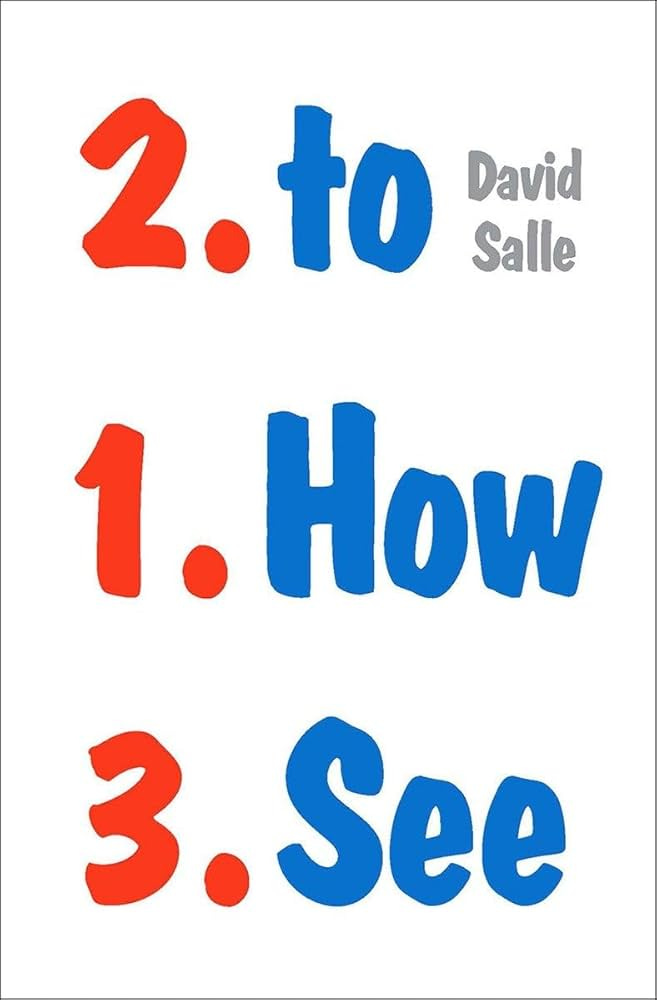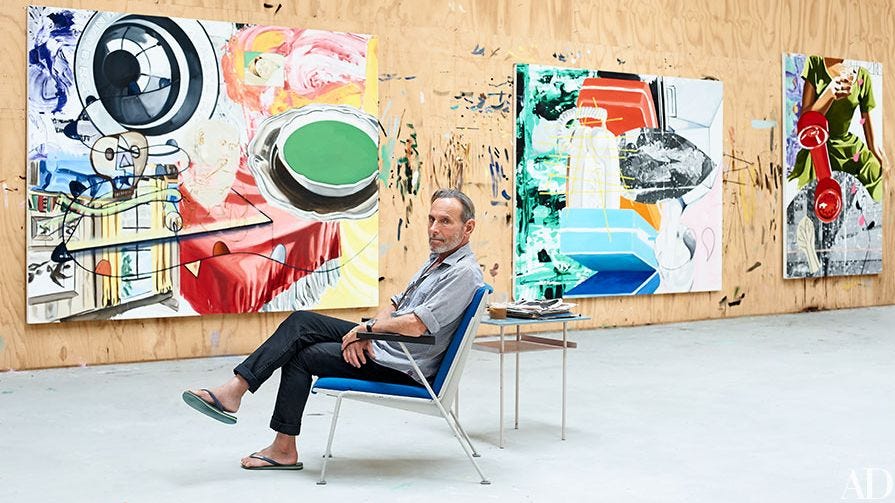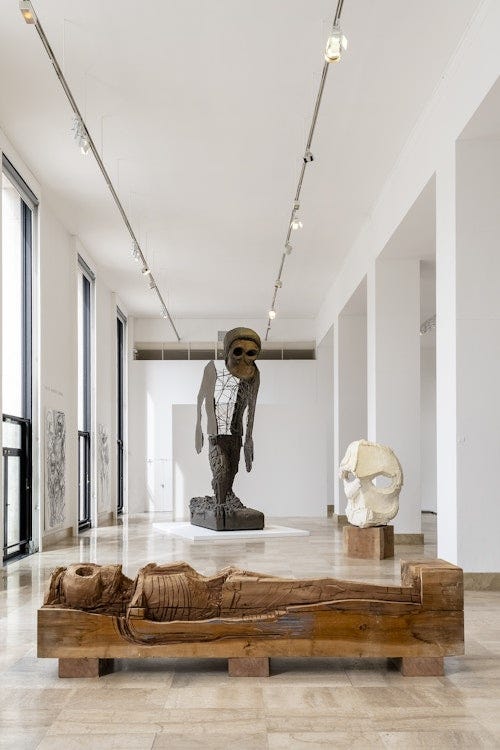Book Review: "How to See: Looking, Talking, and Thinking About Art" by David Salle (2016)

My feelings on How to See are about as mixed as a Kurt Schwitters found object assemblage - conflicted and confused. Part of me enjoyed aspects of Salle’s writing, while another part of me came away quite frustrated. This text had been on my Goodreads “Must-Read” list for a few years and I was initially elated when Hunter College’s Interlibrary loan came through in delivering me a copy of the book. Needless to say, I can neither give this text a rousing endorsement nor an excoriating critique, for my review falls straight down the middle (I suppose you could say the equivalent of a two-and-a-half star review on Goodreads). But I digress, How to See is worthy of a full-length review simply because it was written by Salle (American, b. 1952), one of the leading Neo-Expressionists who emerged in the New York art scene of the 1980s, who shares his views on historic and contemporary artists and how this informs his perception of art. Personally, I am not a fan of Salle’s work, but I did not let this diminish my views of the book for I believe that artists’ writings are crucial resources in helping one to develop a more enhanced understanding and appreciation of art.

Every chapter of How to See is an essay Salle wrote in which he expresses his views on specific artists, what their art means to him, praise and / or criticism of their work, and further contextual insights. Most of the chapters focus on a single artist (Ex.: Frank Stella, Mike Kelley, Francis Picabia, et al.) while others group several together according to a common thread (Ex.: formal similarities between Marsden Hartley, Philip Guston, and Clyfford Still). With most of the artists encompassing individuals of late-Modernism and Contemporary Art, Salle has a prime advantage as a writer in that he discusses such figures from a personal standpoint, either because he was acquainted with them or was a contemporary who was aware of their work from a distance. One of the best chapters in this regard was “Roy Lichtenstein: Change is Hard” in which Salle provides a deeply emotional and sophisticated analysis of Pop artist Roy Lichtenstein’s late-career paintings and what these symbolized about his evolution as an artist. In another example, “Dana Schutz: A Guy Named Frank” was a delightful read for the hyper-close looking Salle employs in describing Dana Schutz’s (American, b. 1976) densely layered, very open-ended figurative paintings. However, a problem that emerges a few times throughout the book is that Salle’s admiration for certain artists over others feels more akin to sycophancy than homage (see the chapter on Jeff Koons).

This makes for a great segue on Salle’s writing style, which is undeniably the main reason why I am so vexed about my views on How to See. Let me preface that Salle is an excellent writer, so my issues have nothing to do with poor writing. On the contrary, Salle is gifted for his ability to not only craft such richly poetic descriptions of artworks and styles, but also his knack for concretizing art historical and theoretical ideas in comprehensible terms that neither overestimate nor underestimate his readers’ competency. However, Salle’s writing occasionally kind of goes a bit off the rails where his sentences become too convoluted, analytical takeaways too highfalutin, and personal views too preachy.

For the first point, I distinctly recall falling asleep whilst reading his chapter on the painter Albert Oehlen (German, b. 1954) because his summaries of the artist’s gestural abstract works were unnecessarily detailed with too much tangentiality. As for the highfalutin critique, points that were likely intended to be objective context on specific artists became tainted with subjective speculation - here is a quote on Salle’s explanation of the differences between the artists Wade Guyton and Rosemarie Trockel: “The work of one [Guyton] - young, American, narrowly-focused - bristles with self-confidence; it has the success gene. The work of the other - older, European, feminine [Trockel] - is complex, inclusive, and tinged with melancholy.” Maybe this is the art historian in me, but I just feel that if I used this kind of writing for one of my Art History papers in grad school it would merit my professor writing a question mark or commenting something like “unclear”, “unspecific”, “too narrow”, “too interpretive”, and so on. As for the preachiness, Salle tries to present himself as the cool-headed, let-me-level-with-you artist who does not kowtow to mainstream Art World trends. Conversely, a pretentiousness filters through that makes the writing almost unbearable to read. In one of the earlier chapters, he goes off on Gerhard Richter (German, b. 1932) as being an artist whose work hits people over the heads with complex concepts. Meanwhile, one of my biggest takeaways is that Salle regularly goes on a mini-tirade over Minimalism and Post-Minimalism. Yes, Salle, I get it, you have all but started dancing over the grave of Minimalism in the wake of the triumph of 1980s Neo-Expressionism! I believe it was this section early on that made me stop reading the book for a roughly two week period before resuming.

Conversely, one of the saving graces to Salle’s writing is that he has a natural way of inserting humorous commentary within his statements. For the chapter on Barbara Bloom (American, b. 1951), Salle recounts his experience of visiting Bloom’s 2013 exhibition at The Jewish Museum, As it were … So to speak: A Museum Collection in Dialogue with Barbara Bloom. As a conceptual artist, Bloom turned the act of curation into an artistic expression by choosing 276 pieces from The Jewish Museum’s 25,000 holdings of objects to create an alternative narrative of the museum itself and Jewish art, history, and identity. Salle shared his initial impressions upon entering the exhibition space: “Normally, the idea of a room full of the sort of Yiddisha-kite knickknacks that my grandparents might have kvelled over would have me looking for the exit.” I appreciate a bluntly expressed comedic response that feels as though it came straight out of the mouth of Richard Lewis, Larry David, or Mel Brooks (and for the record, all of this segued into Salle’s eventual praise for Bloom’s exhibition).
I will briefly add that there is also an element of showing off that is painfully obvious. He seems to make it explicitly clear that he is Jeff Koons’s numero uno fan and that the Neo-Pop artist is a misunderstood creative genius. Granted, I have a whole litany of critiques of Koons that I will not get into as these are not germane to How to See, but Salle’s writing in this terrain becomes way more of a slog.
The use of non-sequiturs may also pose a problem for those who are not partial to this writing device. The only comment I will make is that he begins one of his chapters with a page and a half summary of a subplot from an episode of The Sopranos as some kind of textual cold open that precedes his in-depth discussion on the chapter’s artist. It really does not matter which chapter this corresponded to as I really hated that literary effect because I find it so uninteresting and irrelevant.

In the few instances in which he talks about an artist active before the mid-20th Century, Salle excels in sharing his astute observations on the work and legacies of a few individuals. “André Derain and Courbet’s Palette” was an excellent discourse on the frequent misperception of Derain (French, 1880 - 1954) as being merely a Fauvist painter, but a far more multifaceted artist whose still life compositions prove that a Modernist need not throw off the shackles of classical art conventions to get ahead in their career. I appreciated Salle’s rigorous analysis of Derain’s art and how key life events contributed to the shift in his style, along with additional commentary on how Modernism is not exactly a total disjuncture from the rules of classical art.
Writing aside, I have one formatting complaint that also feels important to acknowledge. A black-and-white reproduction of an artwork punctuates the start of each chapter, but there are problems with how this is applied in Salle’s text. For starters, there is an inconsistency in how these are manifested. At the very late point of page 171 (more than halfway through the book), the chapter on Thomas Houseago (British, b. 1972) is absent of any opening image. What gives? Though I am not partial to colorless artwork reproductions (who is?), I can understand possible publishing limitations that prevent their inclusion. Yet, for Salle, there are moments when he was better off not including anything as his at-times overwhelming, jargon-laden sentences seldom refer back to the chosen image that bookends their respective chapter, such as the one that jointly covered Wade Guyton (American, b. 1972) and Rosemarie Trockel (German, b. 1952).

Just going based on my own assessment, it should be clear that I was not in love with this book, but I also did not completely hate it. I think the tension I feel is that there was simultaneously too much and too little going on: in one extreme, an over-exhausting delineation of Salle’s interpretive assessments that droned practically ad infinitum, but also a sense that Salle could have done more in making his writing be less pretentious and more democratic when considering the educational aims that undergird his motivations for publishing How to See. Despite my myriad criticisms, I still recommend How to See as an essential text because it is important to read about art from the perspective of an artist as one can get a sense of how someone like Salle’s background as a painter, first and foremost, informs his views on art.



